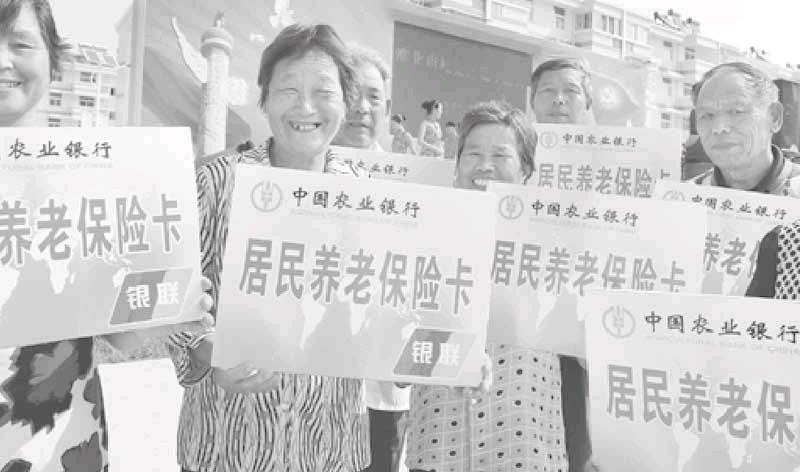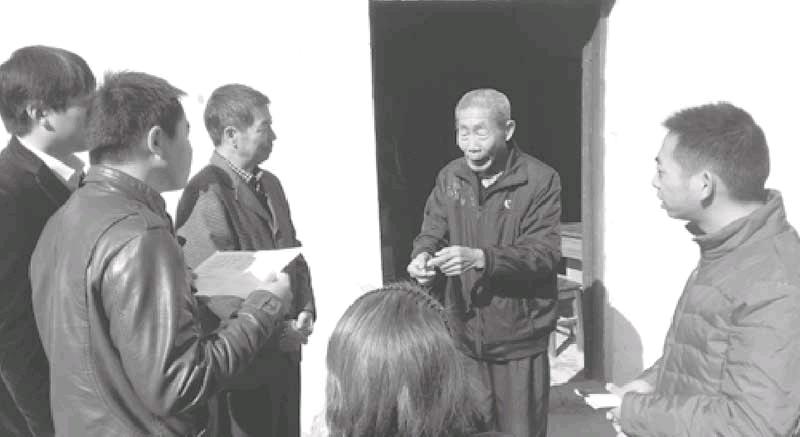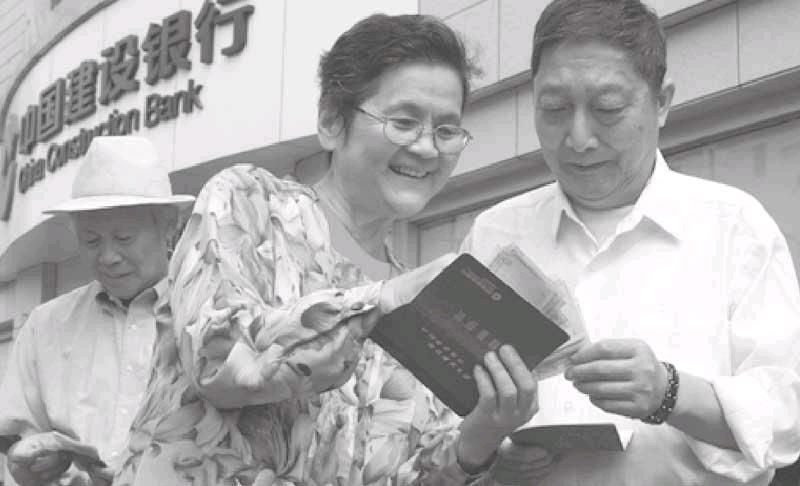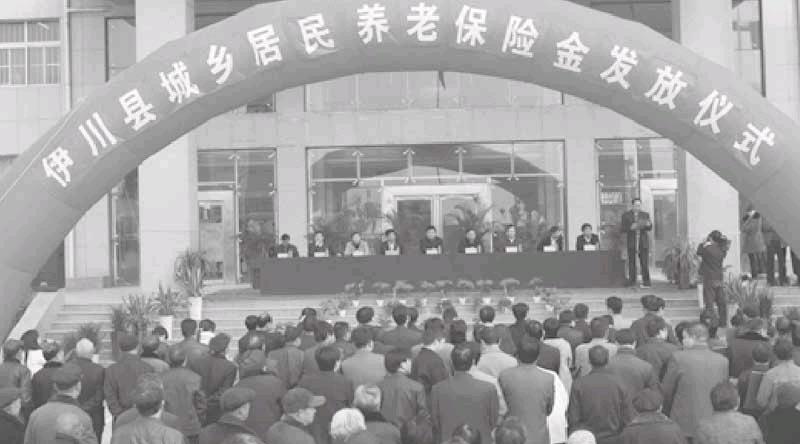China: Residents Pension Balance Shrink
2016-05-19
It is a common expectation for 220 million senior citi- zens in China: Elderly will be looked after properly .
According to a data released by National Bureau of Statistics, in 2015, more than 220 million senior citizens in China are over the age of 60, which covers 16.1% of the total population. In other words, in every 6 people in China, 1 is elderly people.
China is facing a rapidly aging society, we has kept warning this for decades, now it has come true. In just a decade, the proportion of elderly people increased 6%.
According to Zhai Zhenwu, dean of School of Social and Population of Renmin University of China, start from 2022, the number of elderly people in China will be doubled to nearly 25 million each year, and by the end of 2040, the proportion of elderly people in China will be reached to 33%.
However, there is a significant difference between different type of pensions in different areas. According to a survey on 28 provinces, 134 counties and 462 villages carried out by Renmin University of China, in terms of the median value of pension, from the top to the bottom are: state-owned enterprise (3000 yuan); town worker basic old-age pension (2300 yuan); urban residents social pension (1070.9 yuan), and rural social endowment insurance (60 yuan).
The above survey suggests that, the government should take various measures to effectively improve the level of rural social endowment insurance; encourage all regions to build age allowance system and endowment service subsidy system, offer more opportunities for rural elderly people to increase income, and improve material basis for the elderly people.
Key: Rural & Urban Fundamental Annuities
Although the report shows that more than 80% rural & urban elderly people have got their pensions, different regions have different pension standard.
For example, 91.25% urban elderly people can have their pensions, among them, 71.93% take the pension as their only living resource. “On average, elderly people retired from a state-owned enterprise can get 3175 yuan of pension each month, which means, the pension can guarantee their life basically. ” said Du Peng, director of the Institute of Gerontology, Renmin University of China.
However, in vast rural areas, 70.79% rural elderly people can have their pensions, among them, only 17.22% can take the pension as their only living resource, the average pension per month in rural areas is 141 yuan.endprint
According to the goal of building a well-off society in an all-round way, to establish the normal adjustment mechanism of basic pension is one of the major tasks during the period of the 13rd five-year plan.
It is understood that there are two key points: 1. Overall arrangement of enterprise and authority institution retiree basic pension pay adjustment. 2. the increase of urban & rural residents basic pension
And at the same time, Chinas urban workers pensions have been increased for 11 years in a row. Whereas urban and rural residents basic pension only be increased for the first time last year, increased from 55 yuan/month to 70 yuan/ month.
Sun Yongyong, leader of social security professional disciplines of Central China Normal University said, “It is necessary to increase urban and rural residents basic pension in the future.”
The reason why it is not be increased before is because the endowment insurance system is fragmented at that time. It was until 2014, the integration of urban and rural residents basic pension created a condition for the increase.
Then, is it possible that the urban and rural residents basic pension can be increased this year? According to a survey, provinces such as Hebei, Qinghai, and Jiangsu has already clearly put forward in the government report that the urban and rural residents basic pension will be increased, for example, Jiangsu will increased it to 115 yuan/month.
Yi Weimin, minister of Human Resources and Social Security recently said, the reform of the old-age insurance system should be focused on the 7 aspects: pursue universal coverage plan; the lower pooling level of pension insurance; to further improve the system of personal accounts; incremental delay retirement age policy; the investment and operation of endowment insurance fund; raising endowment insurance fund through many channels; improve multiple level endowment insurance system.
The current balance of urban and rural residents pension shrink for the first time.
However, by the end of 2015, the number of insured rural and urban residents basic pension in China has reached to 505 million, which is even 150 million more than the number of insured urban worker pension. If the rural and urban residents basic pension continued to be increased, will the fund sustainability be influenced?
It is noted that urban and rural residents pension shrank for the first time last year.endprint
According to statistics released by Ministry of Labor and Social Security, in terms of urban and rural residents basic pension, current fund income in 2015 is 295.18 billion yuan, fund expenditure is 223.04 billion yuan, the total current balance is 72.14 billion yuan, which is 880 million yuan lower than last year.
As a matter of fact, the negative growth of current balance starts to exist in 2014. In terms of this, Sun Yongyong said, in one hand, since the expand of coverage, the number of insured pension rapidly increased within institutions, which lead to the significant expand of fund expenditure; in the other hand, it has relation with the reduction of people who pay the pension.
In terms of speed increase, in 2015, including financial subsidies, the fund income growth is 23.67%, increased nearly 13% than last year; and in spending side, the growth rapidly reached to 34.63% last year, which increased 21% month-onmonth.
In Sun Yongyongs view, this is because urban and rural residents pension initially focused on covering population. However, as the system running in a few years, many people may get pension as soon as entering into the institution.
Taking year 2014 as an example, 18 provinces in China witnessed a growth of number of people who can get urban and rural residents pensions, and in cities such as Tianjin and Shanghai, basically in every 10 insurance participants, 6 have start to get pensions.
“This means, across the country, the period of rapid growth of insurance participants is already over, and the ad-justment of relevant policy of urban and rural residents basic pension system should be catch up timely.”Sun Yongyong said.
According to ‘China Pension Development Report, the growth of insurance participants and insured pension have been relatively low, and the growth rate of decline is already very small, which means most of the accumulated potential insurance participants in urban and rural have been covered, and the development of the system has entered into a new phrase.
However, Sun Yongyong also points out, “ It is noted that unlike the operation of urban worker endowment insurance fund, which focused on mixed mode income accumulation model, in a sense, urban and rural residents pension is not a real insurance project, its more like a welfare policy. For example, in 2014, fiscal assistance has covered 64.9% of fund income scale, and has become the main source of income that support the system operation.
“Therefore, in next step, in order to increase urban and rural residents pension, the government can only rely on increasing financial subsidies to deal with the pressure of fund payment.” Du Peng said.
However, when reviewing the actual operation of the system in cities such as Guangdong and Beijing, the fiscal subsidy is a hierarchical system, central government, province and city, even local government can give a subsidy. endprint
endprint
